My column from last month offered a general overview of recent vintages from the appellations of Bordeaux’s Right Bank, but now it is time to get specific by pointing toward top properties and winning wines. During an intensive week of tastings in late December, I visited 23 chateaux and tasted hundreds of new releases and barrel samples from 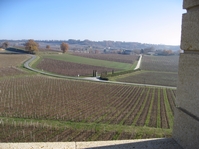 the 10 appellations that comprise Bordeaux’s Right Bank, and the notes that follow will recount the highlights of those tastings.
the 10 appellations that comprise Bordeaux’s Right Bank, and the notes that follow will recount the highlights of those tastings.
Of the 10 appellations in question, Saint-Emilion and Pomerol are by far the most famous, but the remaining sub-regions are well worth learning. The top properties in these sub-regions share the macro-climate and grape varieties of their more prestigious neighbors, and in years offering good growing conditions, they craft wines that are close in quality but much lower in price. The challenge for consumers is to sort out the top properties from these sub-regions, since chateaux in the middle of the pack tend to make less-than-stellar wines in growing seasons that fall short of great vintages like 2005, when excellence was very widely distributed.
While we’re talking challenges, it is also important to recognize that both Pomerol and Saint-Emilion are quite stratified internally. Pomerol is quite small in the extent of its surface area, but differences in soils and exposures result in dramatically differing results that are quite consistent over time. These differences are reflected in selling prices, with the most sought-after wines like Chateau Petrus selling for more than ten times the price of their less favorably situated brethren.
Saint-Emilion is far more stratified, with more producers scattered over a much broader area. Saint-Emilion is also marked by greater fluctuation in the relative strength of its producers, with some getting much better even as others slide in performance over relatively short spans of time. This is reflected in St.-Emilion’s classification of properties, which is quite fluid and intensely controversial--with the controversy often ranging beyond winemaking circles and into the courts and various political arenas. To make an exceedingly long story relatively short, there is a vast distinction between wines simply classified simply as “Saint-Emilion” and those labeled as “Saint-Emilion Grand Cru,” with an equally significant divide between “Saint-Emilion Grand Cru” and 57 properties designated as “Saint-Emilion Grand Cru Classé.” Above these are another 15 estates deemed “Premiers Grand Crus Classés” and divided into “A” and “B” divisions, with the “A” division consisting of only the two exalted properties of Ausone and Cheval Blanc.
What should you make of all of this complexity in Bordeaux’s Right Bank? In practical terms, the upshot may seem surprisingly clear: 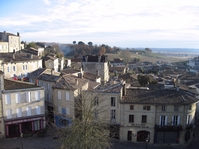 Know the best producers. It also important to pay attention to vintage quality, but this is a secondary undertaking for consumers. On one hand, it is true that great growing seasons like 2000, 2005, 2009 and 2010 will enable you to range fairly widely in your purchases with a high likelihood of finding delicious wines. But on the other hand, the best producers will still tend to make better wines in these excellent vintages, and in more challenging years, it is especially important to focus on the best vineyards and the most skillful winemaking teams.
Know the best producers. It also important to pay attention to vintage quality, but this is a secondary undertaking for consumers. On one hand, it is true that great growing seasons like 2000, 2005, 2009 and 2010 will enable you to range fairly widely in your purchases with a high likelihood of finding delicious wines. But on the other hand, the best producers will still tend to make better wines in these excellent vintages, and in more challenging years, it is especially important to focus on the best vineyards and the most skillful winemaking teams.
Without further ado, then, here are the highlights from December’s tastings and site visits, starting with the top appellations and working down to more affordable wines from less exalted areas. At the end of the brief producer or appellation profiles you’ll find some specific recommendations of wines from particular vintages that showed especially well in my tastings:
Saint-Emilion Grand Cru Classé:
Ch. Cheval Blanc, Premier Grand Cru Classé A: Situated next to Pomerol at the edge of St.-Emilion and also distinguished by a conspicuously high percentage of Cabernet Franc in the blend, this is a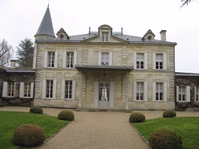 property unto itself. In qualitative terms, Cheval Blanc is certainly the premier property in St.-Emilion, and only a couple of Pomerol chateaux such as Petrus can challenge it for supremacy in the entire Right Bank. Cheval Blanc’s lead may actually be stretched soon, as construction work on a gigantic expansion of the winemaking facility should be completed soon, presumably in time for Vinexpo this summer but certainly for the 2011 harvest. The 1982 from Cheval Blanc may still be the best red wine ever to pass my lips, so one can only wonder how good the wines from a new facility might become. Watch for: 2004.
property unto itself. In qualitative terms, Cheval Blanc is certainly the premier property in St.-Emilion, and only a couple of Pomerol chateaux such as Petrus can challenge it for supremacy in the entire Right Bank. Cheval Blanc’s lead may actually be stretched soon, as construction work on a gigantic expansion of the winemaking facility should be completed soon, presumably in time for Vinexpo this summer but certainly for the 2011 harvest. The 1982 from Cheval Blanc may still be the best red wine ever to pass my lips, so one can only wonder how good the wines from a new facility might become. Watch for: 2004.
Ch. Ausone, Premier Grand Cru Classé A: A small but ancient and potentially extraordinary property, Ausone wines are very rare and 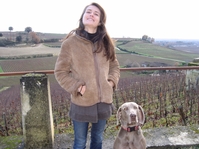 impossibly expensive. For example, the going rate for the 2005 is now roughly $2,500 per bottle. Alain Vauthier is now the proprietor, and he has worked tirelessly to enable the wine to merit its place at the top of the Bordeaux pyramid, along with his daughter Pauline and her quite remarkable dog, Cork. A new fermentation cellar is just one of many improvements that promise to return Ausone to indisputable greatness. Watch for: A winning lottery ticket.
impossibly expensive. For example, the going rate for the 2005 is now roughly $2,500 per bottle. Alain Vauthier is now the proprietor, and he has worked tirelessly to enable the wine to merit its place at the top of the Bordeaux pyramid, along with his daughter Pauline and her quite remarkable dog, Cork. A new fermentation cellar is just one of many improvements that promise to return Ausone to indisputable greatness. Watch for: A winning lottery ticket.
Ch. L’Angelus, Premier Grand Cru Classé B: The past two decades have seen this chateau tighten its grip on a top spot in Saint-Emilion under the direction of Hubert de Boüard. The 1989 and 1990 were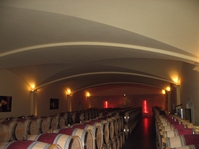 fantastic (damn, I wish that I had bought more of them!), and the property has gone from strength to strength ever since, making very good wines even in the most difficult years. The percentage of Merlot at Angelus is unusually low at 50%, with an unusually high 47% of Cabernet Franc and an average age of 45-50 years for the vines. All new oak is used for the grand vin, with ageing of 22-23 months. This is unusually long, but most of the barrels are given only medium toast, with the trend here now running to even lower toast levels, including some casks that are given a “white toast” treatment that is more like a slow steaming than actual burning. Ch. Bellevue, the second wine made here, can be very good. L’Angelus is often very sweet and succulent and soft despite being very rich and concentrated. Often enjoyable young as a result, its excellent capacity for ageing is often under-appreciated. Watch for: 2008.
fantastic (damn, I wish that I had bought more of them!), and the property has gone from strength to strength ever since, making very good wines even in the most difficult years. The percentage of Merlot at Angelus is unusually low at 50%, with an unusually high 47% of Cabernet Franc and an average age of 45-50 years for the vines. All new oak is used for the grand vin, with ageing of 22-23 months. This is unusually long, but most of the barrels are given only medium toast, with the trend here now running to even lower toast levels, including some casks that are given a “white toast” treatment that is more like a slow steaming than actual burning. Ch. Bellevue, the second wine made here, can be very good. L’Angelus is often very sweet and succulent and soft despite being very rich and concentrated. Often enjoyable young as a result, its excellent capacity for ageing is often under-appreciated. Watch for: 2008.
Ch. Canon, Premier Grand Cru Classé B: Now owned by Chanel, the iconic fashion and perfume company, but founded initially by a privateer (or a pirate, if you prefer), this property has undergone quite the transformation since the late 18th century. The vineyard is planted to 70% Merlot and 30% Cabernet Franc on limestone and clay soils. The 2007 here was a model of soft, suave elegance, and though I was determined not to let the connection to Channel affect my judgment, I came away with the conclusion that this was the single most stylish of all the wines from 2007 that I tasted. Watch for: 2007.
Ch. Pavie, Premier Grand Cru Classé B: Gérard and Chantal Perse purchased this very extensive and beautifully situated property in 1997, 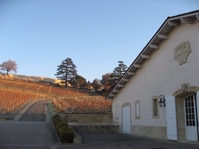 and if they neglected to invest in anything that might have improved the wines, I could not detect it. The 35 hectare vineyard is picked in 20 parcels, each of which is vinified in its own temperature-controlled wood fermenter. The wines are now very expensive, but still not as costly as wines of comparable quality from the Left Bank, so it may make sense to invest in some of them before their prices reach the stratosphere--where they seem to belong. Watch for: 2004, 2009.
and if they neglected to invest in anything that might have improved the wines, I could not detect it. The 35 hectare vineyard is picked in 20 parcels, each of which is vinified in its own temperature-controlled wood fermenter. The wines are now very expensive, but still not as costly as wines of comparable quality from the Left Bank, so it may make sense to invest in some of them before their prices reach the stratosphere--where they seem to belong. Watch for: 2004, 2009.
Ch. Troplong-Mondot, Premier Grand Cru Classé B: Full disclosure requires that I acknowledge my deep affection for Christine Valette and Xavier Pariente, whom I rank among the handful of most admirable and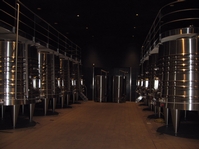 interesting proprietors in the entire world of wine. They are peerlessly charming, which might make me wonder about my objectivity regarding their wines--if not for the fact that every critic of consequence agrees on the excellence of Troplong-Mondot. The vineyard is managed in a highly conscientious and sustainable manner, and the winery is a model of beautiful simplicity. The current release 2008 is very dark and dense, but also remarkably pure and natural in character, with a lovely proportionality that makes immediate enjoyment possible despite the likelihood that it will continue to improve for another decade or more. Watch for: 2008.
interesting proprietors in the entire world of wine. They are peerlessly charming, which might make me wonder about my objectivity regarding their wines--if not for the fact that every critic of consequence agrees on the excellence of Troplong-Mondot. The vineyard is managed in a highly conscientious and sustainable manner, and the winery is a model of beautiful simplicity. The current release 2008 is very dark and dense, but also remarkably pure and natural in character, with a lovely proportionality that makes immediate enjoyment possible despite the likelihood that it will continue to improve for another decade or more. Watch for: 2008.
Saint-Emilion Grand Cru Classé to Watch for: Ch. Ripeau 2005; Ch. Petit Faurie de Soutard 2005; Ch. Dassault 2001; Ch. Chauvin 2001; Clos des Jacobins 2000; Ch. Fonroque 2006; Canon la Gaffelière 2007.
Saint-Emilion Grand Cru:
Ch. Faugères: Silvio Denz, the Swiss-German owner of this property, has built a new, ultra-modern winery and then filled it with the very latest technology. For example, sorting is performed by a machine 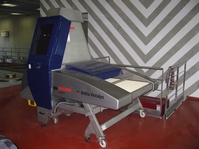 (pictured here) that spots mal-formed berries with lasers and then blows them out of the selection. Fruit from younger vines is directed toward the “Cap de Faugères” bottling, which is strikingly good for the money. The main wine, Ch. Faugères, gets about 50% new oak for 14 months of ageing, and shows lovely balance between the toasty, spicy wood notes and sweet fruit. The top wine is a Cuvée Speciale “Péby,” made entirely from old Merlot vines. Watch for: All three bottlings from 2008.
(pictured here) that spots mal-formed berries with lasers and then blows them out of the selection. Fruit from younger vines is directed toward the “Cap de Faugères” bottling, which is strikingly good for the money. The main wine, Ch. Faugères, gets about 50% new oak for 14 months of ageing, and shows lovely balance between the toasty, spicy wood notes and sweet fruit. The top wine is a Cuvée Speciale “Péby,” made entirely from old Merlot vines. Watch for: All three bottlings from 2008.
Ch. De Valandraud: The remarkable Jean-Luc Thunevin may be the most clever and enterprising vintner of his generation in all of Bordeaux. He arrived in 1984 with the equivalent of $15,000 in euros but now pegs his worth at 12 million euros, noting this sum with pride in 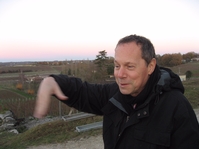 the first five minutes of our conversation (he offered this account; I certainly didn’t ask). Originally from Algeria, he farmed sheep and worked as a lumberjack and a disc jockey before taking employment as a bank employee. When passed over for a promotion to head of the bank, he quit and bought a wine bar in the village of St.-Emilion in the mid-1980s, expanding shortly thereafter into three wine stores and a couple of restaurants. He bought half a hectare of vineyard land in 1990, making it at his home and essentially originating the entire category of vin de garage. Now a consultant and a negociant as well as a producer owning 24 hectares in St.-Emilion, he sports glittering eyes and a boyish grin that seem entirely in keeping with his accomplishments. Watch for: Valandraud 2007.
the first five minutes of our conversation (he offered this account; I certainly didn’t ask). Originally from Algeria, he farmed sheep and worked as a lumberjack and a disc jockey before taking employment as a bank employee. When passed over for a promotion to head of the bank, he quit and bought a wine bar in the village of St.-Emilion in the mid-1980s, expanding shortly thereafter into three wine stores and a couple of restaurants. He bought half a hectare of vineyard land in 1990, making it at his home and essentially originating the entire category of vin de garage. Now a consultant and a negociant as well as a producer owning 24 hectares in St.-Emilion, he sports glittering eyes and a boyish grin that seem entirely in keeping with his accomplishments. Watch for: Valandraud 2007.
Saint-Emilion Grand Cru to Watch for: Ch. du Calvaire 2005; Ch. Haut-Pontet 2005; Ch. Cantenac 2001; Ch. Gaillard 2005; Clos St.-Julien 2007; Ch. Pipeau 2006.
Pomerol
Ch. Certain de May: This small, closely-held, superbly situated property consists of just 5 hectares, with the vineyard planted to 70% Merlot, 25% Cabernet Franc and 5% Cabernet Sauvignon. “Small is Beautiful” may be a cliché in the wider world, but it certainly holds true here, as the vineyard is tended with meticulous care and the wine are made by hand in a manner that shifts notably in each vintage according to the particular character of the fruit. All of the wines from recent years are excellent. This assessment includes 2006 and 2007, even better wines from 2004 and 2008, and a marvelous 2005 (which I scored at 96 points) featuring fruit notes of dark cherry, black plum, cocoa powder, woodsmoke and spices. Watch for: 2004, 2005, 2006, 2007, 2008.
Pomerol to Watch for: Ch. Bellegrave, 2005; Ch. Grange Neuve 2005.
Lalande de Pomerol
Chateau Perron: This estate now comprises 23 hectares planted roughly 80% to Merlot, with the remainder divided between Cabernet Franc and Cabernet Sauvignon. The entry-level bottling is juicy and delicious, and a barrel sample from the 2009 vintage shows strong promise. The top wine is called “La Fleur,” aged entirely in new wood. Watch for: “La Fleur” 2008.
Chateau Tournefeuille: This 17 hectare estate is beautifully situated 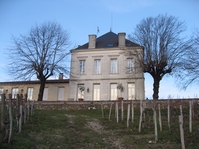 on a slope rising from the little river that separates the appellation from Pomerol. The chateau houses a lovely bed-and-breakfast in a very quiet spot with terrific views. Planted mostly to Merlot, the vineyard’s excellent exposure manifests itself in wines that are notably deeper and richer than the norm for Lalande de Pomerol, though they remain quite well balanced. Watch for: 2003, 2005.
on a slope rising from the little river that separates the appellation from Pomerol. The chateau houses a lovely bed-and-breakfast in a very quiet spot with terrific views. Planted mostly to Merlot, the vineyard’s excellent exposure manifests itself in wines that are notably deeper and richer than the norm for Lalande de Pomerol, though they remain quite well balanced. Watch for: 2003, 2005.
Lalande de Pomerol to Watch for: Ch. Haut Surget 2007; Ch. Chambrun 2008; Ch. Haut Chaigneau 2005; Ch. Haut Chaigneau “La Sergue” 2005 and 2008.
Saint-Emilion “Satellites”
Ch. Du Môle, Puisseguin Saint-Emilion: Established in 1736 but 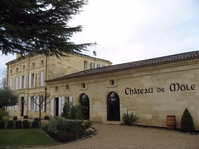 thoroughly refitted since, this is among the most appealing chateaux in the satellite appellations, with a beautiful little hotel incorporated within. The rooms are very inviting, and the cellars are too, restored in a highly authentic manner, with no paint or concrete to be seen anywhere. There are 18 hectares of vineyard land, and though the wines are firmly oaked, the fruit seems to be up to the challenge. Watch for: 2005
thoroughly refitted since, this is among the most appealing chateaux in the satellite appellations, with a beautiful little hotel incorporated within. The rooms are very inviting, and the cellars are too, restored in a highly authentic manner, with no paint or concrete to be seen anywhere. There are 18 hectares of vineyard land, and though the wines are firmly oaked, the fruit seems to be up to the challenge. Watch for: 2005
Ch. De Lussac, Lussac Saint-Emilion: A sizeable property with 25 contiguous hectares surrounding the chateau, this estate has benefited from major upgrades under new ownership since 2000. The vineyard is currently planted to 80% Merlot, with the rest being Cabernet Franc, though a block of recently planted Petit Verdot will come on line soon. Watch for: 2003, 2004
Ch. Tour du Pas St. Georges, Saint-Georges Saint-Emilion: Presided over by the widely respected, highly talented Pascal Delbeck, 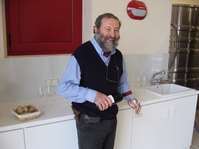 this 15 hectare estate is perhaps the flagship property in Saint-Georges Saint-Emilion, which is probably my favorite of the “Satelite” AOCs. The vineyard is planted to all five of the major red Bordeaux varieties, along with some Carmenère that has now been planted for 15 years. The rendition from 2005 shows how good these wines can be, with both sweet and savory notes perfectly intertwined. Watch for: 2005
this 15 hectare estate is perhaps the flagship property in Saint-Georges Saint-Emilion, which is probably my favorite of the “Satelite” AOCs. The vineyard is planted to all five of the major red Bordeaux varieties, along with some Carmenère that has now been planted for 15 years. The rendition from 2005 shows how good these wines can be, with both sweet and savory notes perfectly intertwined. Watch for: 2005
Saint-Emilion “Satellites” to Watch for: Ch. De la Grenière, Lussac Saint-Emilion 2001; l’Egérie du Ch. Chéreau, Lussac Saint-Emilion 2004; Ch. Puynormond, Montagne Saint-Emilion Vieilles Vignes 2005; Ch. Calon, Saint-Georges Saint-Emilion 2005.
Fronsac and Canon-Fronsac
Ch. Moulin Pey-Labrie, Canon-Fronsac: These wines performed quite impressively despite having everything stacked against them, as I tasted them first thing in the morning on a wickedly frigid day in a cellar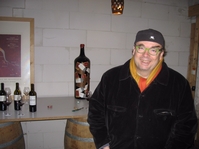 that seemed every bit as cold inside as the weather was outside. Grégoire Hubau had no mercy with regard to our tasting location, but his personal warmth certainly helped, and his wines were very impressive. They are made overwhelmingly from Merlot with a little Malbec, with some Cabernet Sauvignon and Franc also planted. The 2000 and 2005 were very good, as one would expect in light of the quality of those vintages, but the real eye-opener was the 2003, which I purchased and the end of the trip to lug home with me. Watch for: 2003.
that seemed every bit as cold inside as the weather was outside. Grégoire Hubau had no mercy with regard to our tasting location, but his personal warmth certainly helped, and his wines were very impressive. They are made overwhelmingly from Merlot with a little Malbec, with some Cabernet Sauvignon and Franc also planted. The 2000 and 2005 were very good, as one would expect in light of the quality of those vintages, but the real eye-opener was the 2003, which I purchased and the end of the trip to lug home with me. Watch for: 2003.
Ch. La Rivière, Fronsac: This is the largest property in Fronsac, with 60 hectares out of a total of 85 planted to vines. The chateau itself 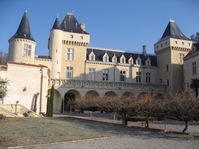 dates from the 16th century and is phenomenal. The basic wine is quite solid even in relatively poor years like 2002, and shows admirable quality from 2004 and 2008. The top wine, Aria de la Rivière, is made from the oldest vines, which are cropped at only 4 bunches per vine. Even the rendition from 2002 is massively concentrated, making one wonder what this wine will look like from warmer, drier years like 2005, 2009 and 2010. Watch for: Aria de la Rivière 2002.
dates from the 16th century and is phenomenal. The basic wine is quite solid even in relatively poor years like 2002, and shows admirable quality from 2004 and 2008. The top wine, Aria de la Rivière, is made from the oldest vines, which are cropped at only 4 bunches per vine. Even the rendition from 2002 is massively concentrated, making one wonder what this wine will look like from warmer, drier years like 2005, 2009 and 2010. Watch for: Aria de la Rivière 2002.
Fronsac and Canon-Fronsac to Watch for: Ch. Cassagne Haut-Canon, Canon Fronsac “La Truffière” 2001; Ch. Renard Mondésir, Fronsac 2003.
* * *
Questions or comments? Write to me at mfranz@winereviewonline.com
To see last month’s column on recent vintages in Bordeaux’s Right Bank appellations, click on my name at the bottom of the WRO “Home” page, which will bring up all of my columns in a list headed by the most recent ones. Alternatively, clicking on the following link will take you directly to the column:
http://www.winereviewonline.com/Michael_Franz_on_Right_Bank_Bordeaux.cfm
: